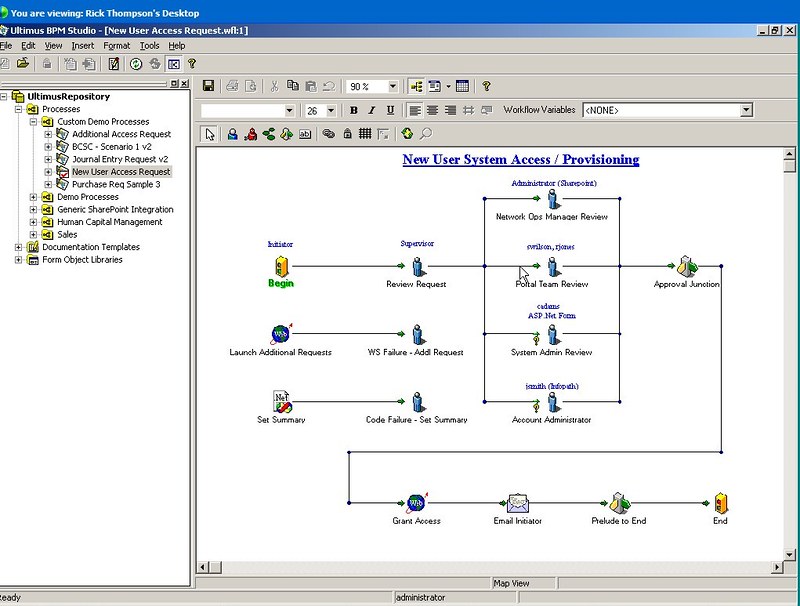I’m in a roundtable session with one brand new Ultimus customer, one who’s six months in and just getting their first processes rolled out, and one who’s done a lot of processes already. As was requested previously, and again not-so-subtly by Chris Heivly who is moderating this session, I won’t be documenting the names of the customers or the details.
Instead, I am forced to blog about my cat:
She’s not much into BPM, but you can see that she’s a bit of an efficiency expert.
Seriously, though, there were a few good nuggets in the session that won’t tell any tales out of school:
- Product demos aren’t enough to bridge the gap to understanding what BPM can do for you: you need to prototype your processes in a product to really understand it.
- Going paperless is a huge cultural challenge, but once the users get used to it, they wouldn’t give it up.
- HR onboarding provides a good opportunity for automation, and can justify the cost of the BPM system alone in a larger organization.
- Implementing one relatively straightforward process up front can be used to help bolster the business case for additional implementations. One example that we heard was implementing the approval process for the requirements for the processes that you’re there to build in the first place.
- Sometimes it’s worthwhile to implement the current process without reengineering — pave the cowpaths, as it were — in order to start gathering statistics on the bottlenecks in the process and highlight the potential for improvements.
- The center of excellence approach is critical for rolling out a large number of processes efficiently, using a small core of dedicated resources, then moving other people in and out of the team as their skills were required.
- A rapid, agile-like approach with a minimum of structured requirements works well, especially for getting the initial happy path process up and running; you can go back and fill in the exception cases later in the design and implementation cycle.




